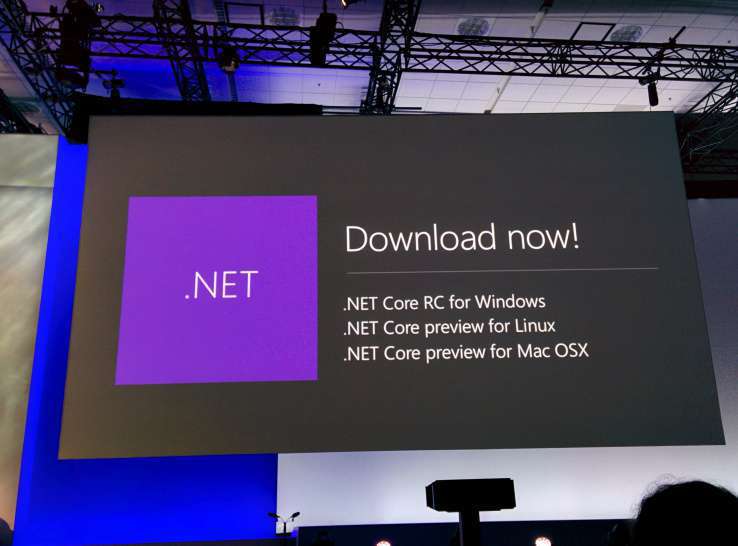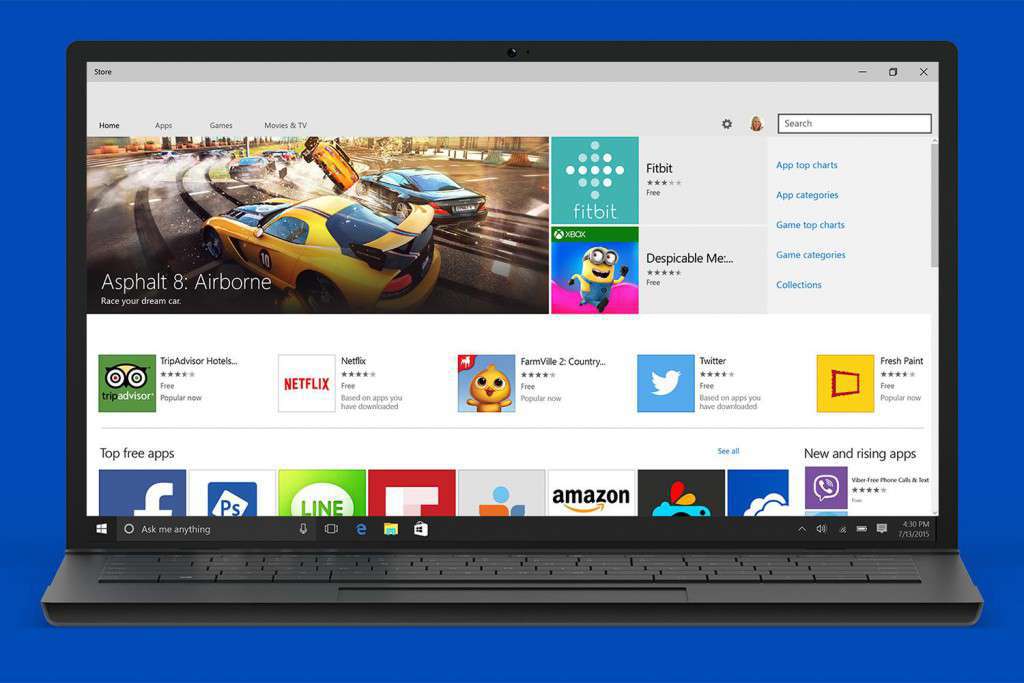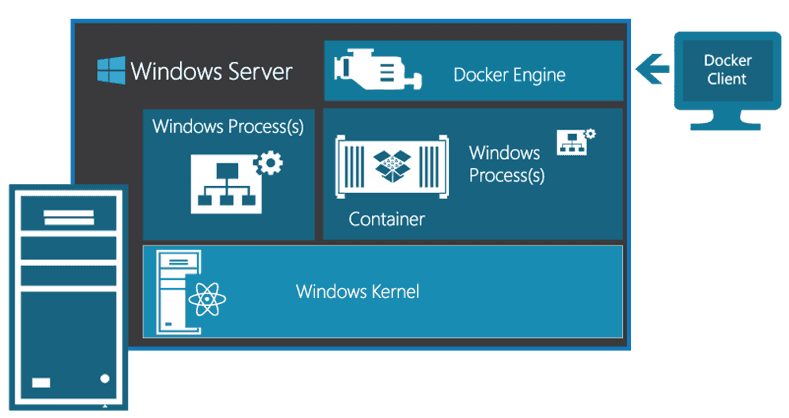The internet is packed with articles about Microsoft development strategies and their influence on the IT industry. While everyone is jabbering about their trends, hits and flops, I would like to draw your attention to some hidden aspects of the latest changes in Microsoft, and their underestimated potential.
written by:
Alexander Sliborsky
Head of R&D and Innovations
The internet is packed with articles about Microsoft development strategies and their influence on the IT industry. While everyone is jabbering about their trends, hits and flops, I would like to draw your attention to some hidden aspects of the latest changes in Microsoft, and their underestimated potential.
1.NET Core.
Do you remember the launch of Silverlight under the slogan “We will run your RIA on any platform”? Now change “RIA” with the word “application” and you will get .NET Core. Obviously, this is a great idea, yet it needs some time to blossom.
So what is it all about? First, Microsoft has introduced a lot of Linux servers to Azure and now it is launching the development of their own platform for Linux. Does it mean that the company decided to lower the stake on Windows Server?
However that may be, .NET Core offers several hidden opportunities for business:
- Risk management
- Expense reduction (due to cheaper servers and other factors)
Usually, preference is given to those platforms that can boast a numerous developer community. This allows for efficient risk management: if you have to break off your current partnership, it will be easier to find someone else to complete or support the project.
Thus, the growing number of supported platforms leads to a growing developer community which gives you more options to choose from.
Another advantage is that developing is getting cheaper. The companies don’t have to squander resources anymore. They can now choose one contractor and form a single team to fulfill their needs. It may seem like a minor advantage yet in fact it is a significant one, for a lot can be done by a single engineer now.
2. Platform unification
We are used to say: “IDE for .NET” and mean Visual Studio, to say “Visual Studio” and have IDE for .NET&C++ in mind. Well, things are getting more interesting now.
Microsoft is trying to make VS a universal platform and, considering how good it is in comparison with iOS development tools, they are prone to success.
This will make raising .NET specialists easier and make them more technology-convertible. Consequently, it will allow for having all-round developers on the staff and cutting the costs of hybrid projects.
3. Common app store
How can you catch up with the competitors if they have plentiful apps and you cannot boast as many?
Microsoft tried many ways of enlarging their app store:
- Porting from other systems
- Announcing competitions for app development
- Creating cross-platform applications
Everything helped a little bit, at first, but nothing really helped. So they decided to adopt the tried and tested method of creating a combined app store for desktop, mobile, tablet and even video game console platforms. Once it is done, you get a rather impressive number of applications, which can be a dangerous weapon in the hands of artful marketing and advertising specialists.
In the meantime, a Windows 10 app can be described as “available in Store” which makes it look smart and mobile. In general, the phenomenon of Store makes you revise your marketing strategies, for this is another promotion channel, apart from the regular and Internet distribution. You don’t want to neglect it, as users tend to trust this new channel more than the old ones.
- Cross-platform and mobile app development
Nowadays, it’s not enough to develop a good platform, for it cannot handle the needs of all its users as well as the numerous apps designed for this platform do.
Microsoft stands out by trying hard to create a unified and universal platform. Up to now, none of its competitors managed to make the dream of all developers come true.
Windows 10 is planned to be a universal operational system for personal computers as well as for smartphones, tablets and any mobile devices.
It means that an app, developed for one platform, can be used on other platforms and devices without any fuss.
Cross-platform development has been an apparent trend among the developers of various technological novelties and libraries. Microsoft decided to go further and gamble on “uni-platform” development. It seems like it’s the same as cross-platform development (developing Android apps with the use of Microsoft tools on a Mac alone counts for a lot!). Yet a closer look reveals that their objective is to universalize the development process. Microsoft says: “Create your app for one platform and take it anywhere!” Sounds good, right? Yes, indeed. However, don’t forget, that you will still have to write for different platforms and add uni-platform development to your cross-platform development skills.
- On the way to the cloud
The direction of computing is only going in one way – to the cloud. Is Microsoft any different? It ranks best in terms of pioneering services and services rendered. Now, many companies don’t know about what PaaS or SaaS models have to offer. Therefore, with rising public awareness of them, there will be more cloud computing happening. The forward-looking businessmen started moving towards the cloud quite a while ago.
Microsoft is trying to move its apps to the cloud too. Even the most desktop ones, such as Office and Visual Studio.
Businessmen and IT specialists should remember that Microsoft’s novelties are always worth another look. If you realize that a system is not meeting your demands today, put it aside and come back tomorrow. It’s very likely that Microsoft’s specialists have improved it substantially, as it was the case with DocumentDB, for example.
- DevOps and dockerization
Another recent trend is Microsoft’s tardy introduction of dockers. A docker is not a virtual machine, but an environment, that lets you create images, containing software, and distribute them. They are lighter, handier and cheaper than virtual machines. Let’s say, if you have a small website, you need an Application Server, a database and the website itself to make it all work. So, instead of installing all the components separately, the developers simply install an image. It works as a part of the operational system and uses the low-level facilities provided by the Linux, and, in the future, by the Windows kernel. All you have to do is run the docker. If you need to install updates or if something gets broken, you just replace the image with a new one. No need to trouble about settings.
Docker should be especially alluring to those who care about rolling out fast, system cloning and time-to-market figures. Yet, this is where Microsoft is behind the game: docker is ready for Linux, but not for Windows. So, if you cannot wait, you have a limited choice. If you have time, though, you can wait till the next Microsoft server operating system is released.
- HoloLens
This is a mixed reality system, developed by Microsoft. When you put on the smartglasses, you can see additional objects around you. This new technology can be extremely useful in AutoCAD modeling, engineering, medicine and other areas.
There are many new opportunities for the gaming world in particular. Make sure you don’t confuse HoloLens with Google Glass. The former can “add” an object to reality, while the latter just projects some information on the glass surface.
As it is usually the case with any breakthrough technologies, there are a great number of trends and hidden opportunities to be discovered.
Just as an example, our research shows that dating sites have reached a deadlock. Who knows, maybe the new gadget will cause a boom and new social networks will arise.
Summing it up
Moving to the cloud, immersion in the mobile world – these are the real Microsoft trends of the day. The .NET community used to be out of the mobile and cross-platform development game, yet now it is deeply engaged in it. It’s a great breakthrough for IT professionals, because now they have even more software to develop, which will lead to a further rise in the popularity of the platform.
There will be more .NET developers and this will help to cut the expenses, which is good for business. Programming for multiple platforms at the same time will get easier. Also, .NET is an investment into cheaper development from the start, if you compare it Java, for example.
Therefore, Microsoft is further accelerating the software development market, where the key factor has already been the ability to roll out fast. The companies striving to shoot ahead should closely watch these trends, driving the future of IT.
by Alexander Sliborsky,
Head of Microsoft Solutions department

Contacts
Feel free to get in touch with us! Use this contact form for an ASAP response.
Call us at +44 151 528 8015
E-mail us at request@qulix.com











